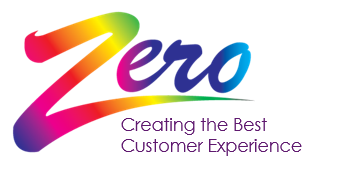VoIP (Voice over IP)
The term VoIP encompasses many other terms but in essence, if your telephone system runs from the internet you are using VoIP, whether it be a cloud PBX or hosted PBX.
IVR (Interactive Voice Response)
This is when you call a company, and you get played a message followed by a set of options whereby the user can press a button or give a voice confirmation. The end goal of this is to transfer you to the right person.
IVA (Intelligent Virtual Agent)
This is an AI-powered assistant (Artificial Intelligence) that will analyse customer input, provide a relevant response and aims to automate customer service without the need for a member of staff. Examples of well-known IVAs include Siri, Alexa, and Google Assistant.
PSTN (Public Switched Telephone Network)
The PSTN network is the original telephone network in the UK. It is being switched off due to improvements in technology such as fibre optics and the fact it is too costly to maintain and upgrade. A PSTN system would generally have one line.
ISDN (Integrated Services Digital Network)
ISDN lines are commonly found in businesses whereby multiple channels/telephone lines are required.
Aside from this the other main difference is that it is a digital line rather than an analogue.
Cloud Services
What is the cloud, and where is it? Contrary to popular belief, the cloud is not in the sky and in actual fact it is quite firmly on the ground. This is because all internet services (excluding Starlink) run through cables in the ground. Examples of cloud-based systems in practice include; HubSpot, Zoho, and Salesforce.
FTTC (Fibre To The Cabinet)
With an FTTC connection, fibre optic cables are used to bring internet to fibre cabinets, the small green boxes you see relatively often out in the streets. However, copper cables are used to connect houses to the cabinet.
FTTP (Fibre To The Premises)
FTTP is full fibre broadband that gives you a dedicated connection that runs directly from the exchange to your property. This is commonly used by residential addresses and some businesses.
Softphone
A ‘softphone’ is simply an application on your smartphone, laptop, computer or tablet that allows you to log in and use the device as a telephone. They usually have a similar interface to that you might find on an I IPhone or Android.
SIP (Session Initiation Protocol)
SIP is a specific technology that supports VoIP calls by connecting your physical PBX to the internet. It is a signalling protocol used for initiating, maintaining, modifying and terminating real-time communications sessions.
PBX (Private Branch Exchange)
PBX stands for private branch exchange, which is a private telephone network used within a company or organization. More and more modern companies are opting for cloud PBX systems for small businesses. The alternative to a cloud PBX is to have a physical PBX on the premises.
IP Address
IP address stands for “Internet Protocol address.” The Internet Protocol is a set of rules for communication over the internet, such as sending mail, streaming video, or connecting to a website. An IP address identifies a network or device on the internet.
ISP (Internet Service Provider)
An ISP (internet service provider) is a company that provides individuals and organizations access to the internet and other related services. An ISP has the equipment and the telecommunication line access required to have a point of presence on the internet for the geographic area served.
UCaaS
UCaaS (Unified Communications as a Service) is often referred to as multi channel customer service. UCaaS brings together telephone, email, text, social media, CRM data and more into one place accessible from the same software / application.
Leased Lines
A leased line is a private telecommunications circuit between two or more locations provided according to a commercial contract. It is sometimes also known as a private circuit, and as a data line in the UK. Typically, leased lines are used by businesses to connect geographically distant offices.
